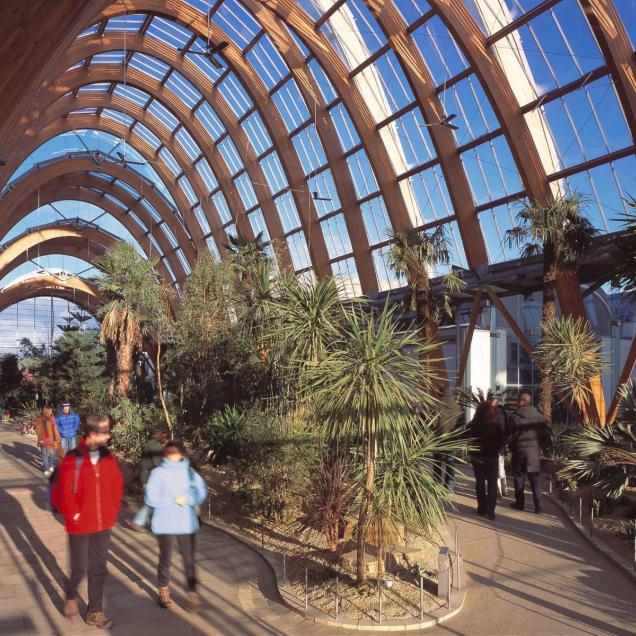

Introduction
The Late Twentieth Century Onwards (Page 42)
The principal development has been Pringle Richards Sharratt's Millennium Galleries and Winter Garden which have set a high standard for the future - whether the projected office, retail and hotel developments of the new century will match that and the best of the previous centuries remains to be seen.
Major Buildings
Millennium Galleries and Winter Garden (Page 74)
Arundel Gate and Surrey Street
A pair of inspirational, landmark buildings by Pringle Richards Sharratt who won the commission in competition in 1995. The Galleries were completed in 2001, the Garden in 2002. They were conceived as the most important elements of the Heart of the City Project and as covered links in a new pedestrian route between the station and city centre, helping restore part of the urban fabric that had been unravelled by post-war road schemes and redevelopment.
The Millennium Galleries provide 1,900 square metres of temporary exhibition space as well as permanent displays of the Ruskin Collection and the city’s fine metalwork and silverware collections. The building eschews ostentation, presenting an elegant and quietly understated front to Arundel Gate, and is set into the slope of the hill with the galleries on the upper level over a service undercroft. The glazed front is set within a slender modular frame of white concrete and reveals the ground floor café to the bustle of Arundel Gate. Long silver louvres screen the Long Gallery above. Inside, a light and spacious entrance hall has escalators to the first floor “avenue" which serves both as an indoor street to the Winter Garden and gives access to the five galleries on its left side. The roof comprises a series of lateral barrel vaults, only partly visible externally, of fine white pre-cast concrete with columns and beams of the same material, giving a cool tranquillity to the interior. This ethereal quality is enhanced by diffused natural light, created by the imaginative use of glass blocks in the avenue’s roof vaults and N wall and cleverly reflected light from clerestories. The largest gallery is flexibly planned with moveable full height screens that run parallel with the vaults. The last of the other three exhibition galleries, containing the Ruskin Collection, is separated from the adjacent Winter Garden by a glazed wall. This has glass panels by Keiko Mukaide symbolising water and clouds, creating an appropriate and stunning juxtaposition of art and nature.
The soaring arches and curved glass roof of the exotically planted Winter Garden is a skilful blend of the traditions of glass-roofed public spaces established in the C19 by glasshouses, shopping arcades and railway stations. Spanning a space 230 ft by 72 ft (70 by 22metres) its frame is formed from twenty-one parabolic arches of laminated strips of untreated larch, which are gradually weathering to a silvery grey. Slender timber purlins and glazing bars create a fine framework between the arches to hold over 2,000 square metres of glass. The primary arches are supported at ground level on sculptural steel cradles, while the intermediate arches finish at wall height and sit on elegant wooden raking struts. From the arches at each end, which lean outward to create canopies over the street entrances, they step up to the 72 ft (22metre) high central section. This will allow the taller species of trees, including Norfolk Island pine and eucalyptus, to reach an impressive maturity, creating a luxuriant canopy above the paving and planting below.
© Yale University Press 2004